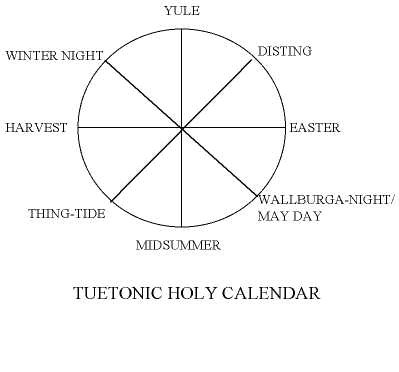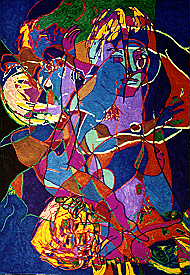

Winter Night is the time of the Norse New Year, which comes at the close of the old harvesting time. The beginning of the most important religious phase of the year - the time of midwinter.
The old Yuletide, also remembered as the "12 days of Christmas". The whole of the year is magically contained and out of it the year is regenerated.
Marks the beginning of the return of the vital forces that had turned inward at the time of Winter Night.
Marks the full manifestation of the return of the vital powers of nature. Eostre is the goddess of the spring and of the dawn.
April 30 May 1)
April 30 is the "witches" night in central Europe. A time when the mysterious night-side of life is manifest. May Day is the opposite, being a bright and sunlit celebration of the day - side of life - of play and of work.
The celebration of the final victory of the Sun in the cycle of the year. Also the full manifestation of the vital forces of nature which were given birth during the Yuletide.
The time of the great regional or national gatherings where the social aspects of the troth are given expression. A time when legislative and business matters are attended to, and when there is a celebration of the social and organizational aspects of the troth.
The culmination of the natural cycle of things that comes into being and passes away toward new beginnings.

|
"THE" Collaborative Process |
|||||||
| (September 96 - April 97) | ||||||||
| Lies | Saints | Addictions | Handcuffs | Evolution | ||||
| Video | Rituals | Humour | Violence | Sanctity | Sanctity | |||
| Page Last Updated January 24, 1997 | ||||||||
| Contribute and Win a Jazzsuite. | ||||||||